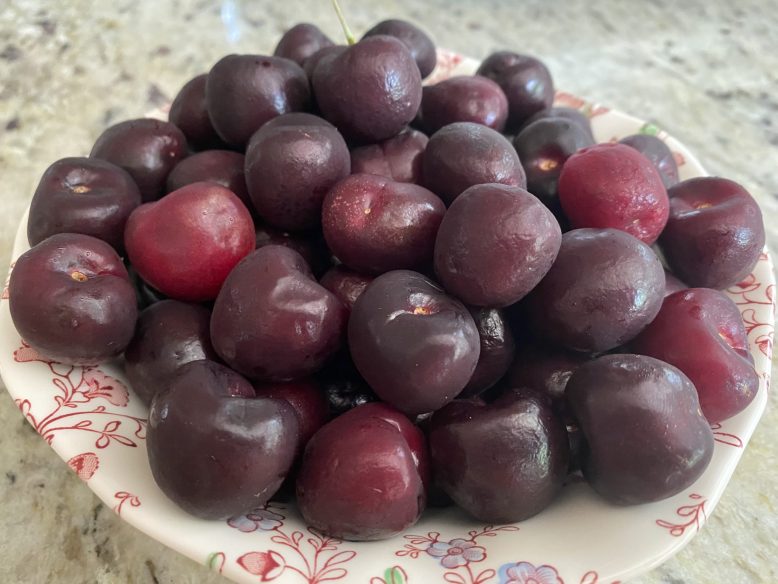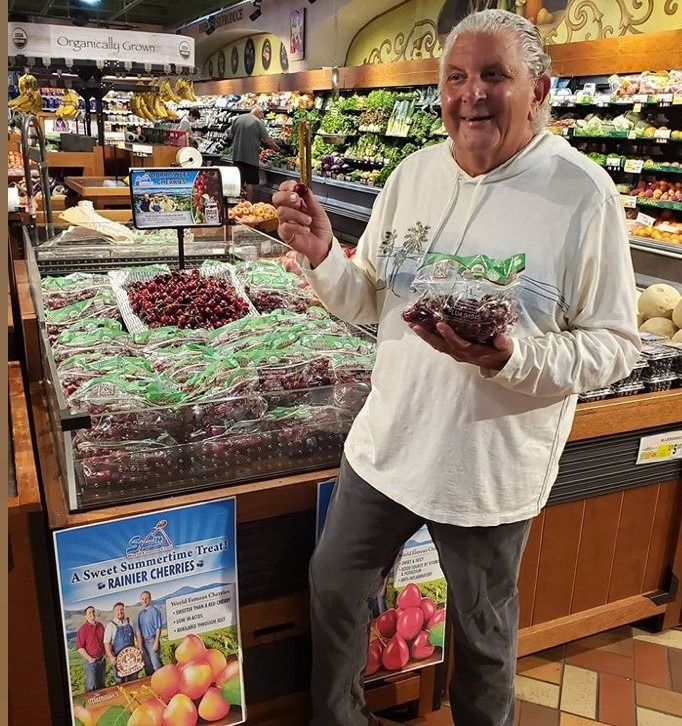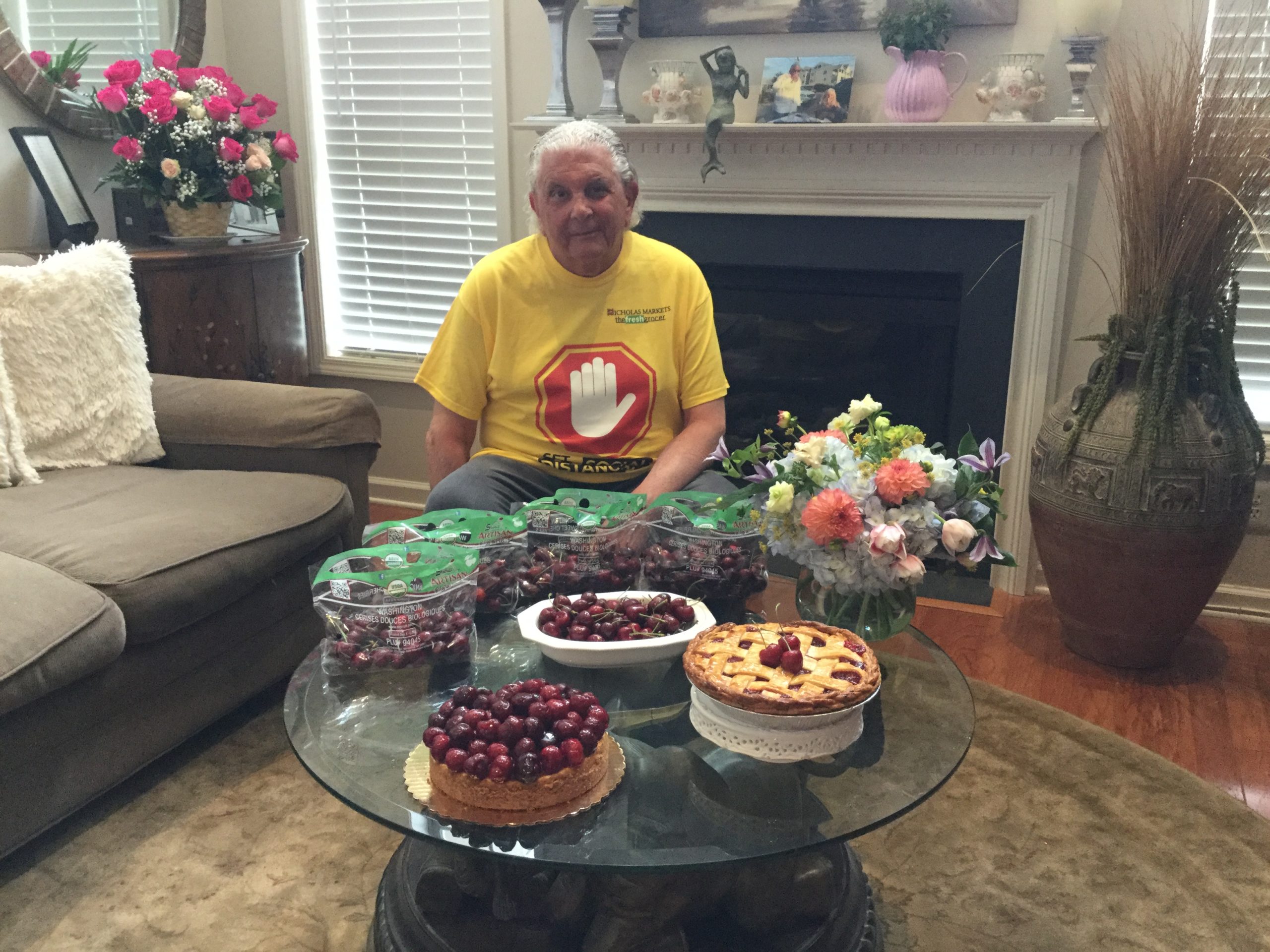
Summer means a menu filled with fresh produce, and that includes a cherry on top—literally. Even though cherries aren’t necessarily grown in bulk on farms in New Jersey, they’re delicious, extremely popular and an iconic symbol of summer I look forward to every year.
The cherry harvest is currently in full swing in the Pacific Northwest, and a shorter crop should mean bigger and sweeter cherries for us all. Each summer, more than 2,000 growers across the states of Washington, Oregon, Idaho, Utah and Montana together produce what we’ve come to know (and love) as the short-but-sweet season of summer cherries. As it turns out, there are more reasons than just their classic flavor to keep cherries in the fridge during the summer; a wealth of research confirms that their antioxidant and anti-inflammatory properties pack a serious health punch as well.
This summer, Northwest growers anticipate harvesting 22.4 million boxes of cherries, down from most years but still a 13-percent increase from last season’s 19.8 million–box crop. Cherries have been one of my favorite fruits for as long as I can remember, and I can’t wait to get my fill!
SHORT SEASON, BIG FLAVOR
As mentioned, cherries have one big flaw—a very short season, not much more than weeks in most places.
Although cherries originated in the Middle East and have been cultivated for centuries in Europe and Asia, the U.S. remains the biggest producer, consumer and exporter. Most sweet cherries are grown on the West Coast, with Washington State being the biggest producer.
The two most common varieties are Lamberts and Bings. Lamberts ripen earlier and are smaller and more tender than Bings. They range in color from deep pink to red, with a soft, somewhat watery flesh and a deep red or blackish-red juice. They arrive from California in early June, with later harvests from Oregon, Washington and Idaho. Bings are big, dark and heart-shaped, with great flavor. They’re very firm, with a deep red-to-black skin, a white heart and a bit of crunch in the bite. They last longer and ship better than Lamberts.
Royal Annes (also called Rainiers and sometimes Napoleons) are occasionally seen on the market. This large, heart-shaped fruit is amber-to-yellow, with a red blush. It’s an excellent cherry with intense flavor, juicy flesh and a white heart. Royal Annes bruise easily, are more fragile and have a shorter shelf life than Bings. Many people shy away from them because of their color, but one taste and they’re hooked.

Produce Pete touts the benefits of cherries during a recent field segment at a local supermarket. Courtesy of Pete Napolitano
CHERRY SEASON
California cherries arrive in early June and are generally out of season by mid-June, with more northern crops gradually replacing them during the summer months, ending with cherries from British Columbia in early August. That’s a total of seven to eight weeks; so if you like cherries and see some good-looking ones at the market, buy them because next time you look, they may be gone. Sweet cherries are also grown in the Midwest and Northeast, but I don’t think their fruit compares in size or flavor to Western varieties. The sweet cherries that show up in January are from Chile, and they continue to improve in flavor and texture.
SELECTION, STORAGE AND PREPARATION
Cherries won’t ripen or improve in flavor after they’re picked, so what you see is what you get. They must be picked ripe; they’ll last only a couple of days, so harvesting time is critical. A ripe cherry is heavier in the hand, meatier, sweeter and juicier than an immature cherry; cherries picked too soon are pale and tasteless, while those picked too ripe are soft and watery. The best time to pick seems to be right before the birds start eating them—birds have an uncanny instinct for ripe cherries!
When selecting, choose firm, large, bright-colored fruit. Royal Annes should be bright and unblemished, while Bings should be as firm and dark as possible; pale red Bings are immature and won’t be especially sweet. Also, look at the stems. If they’re green, the fruit is fresh. If the stem is missing, pass. The cherries have been off the tree too long.
Cherries should look clean and dry—never buy any that are soft, flabby or sticky on the outside. When cherries go bad, they start to lose their vibrant hue, develop a brownish color and begin to leak. Once a cherry starts leaking, fermentation will quickly make the whole box go bad.
I love eating cherries on their own, cut up into fruit or green salads, or blended into baked goods like muffins or cherry pie. My wife Bette’s New York–style cherry cheesecake is famous in our house and always represents a quintessential taste of summer. I’m sure you’ll love it, too!

Produce Pete shares some of the many applications for cherries during a recent taped-from-home segment for NBC Weekend Today in New York. Courtesy of Pete Napolitano/NBC
Bette’s Cherry Cheesecake
Makes 6–8 servings
Crust:
- 1¾ cups graham cracker crumbs
- ¼ cup walnuts, chopped
- 2 teaspoons ground cinnamon
- ½ cup unsalted butter or margarine, melted
Filling:
- 3 eggs
- ¼ teaspoon salt
- 1 pound cream cheese, room temperature
- 1 cup sugar (or to taste)
- 2 teaspoons vanilla extract
- 1 teaspoon almond extract
- 3 cups sour cream
- 1½ cups fresh cherries, pitted and cut in half
Instructions:
Preheat oven to 375 degrees. In a bowl, mix together all of the crust ingredients, then press onto the bottom and up the sides of an 8- or 9-inch springform pan. In a large bowl, beat the eggs, salt, cream cheese, sugar, vanilla and almond extract together until smooth, then blend in the sour cream. Pour the filling into the prepared graham cracker crust and bake for 35 minutes or until a knife inserted into the center comes out clean. Top with cherries, chill for 3 hours, and enjoy!
About “Produce Pete” Napolitano
With over 65 years of experience in the produce industry, New Jersey’s own “Produce Pete” Napolitano is a renowned fruit and vegetable expert, author and television personality who’s appeared on a highly popular segment on NBC’s Weekend Today in New York, broadcast every Saturday morning for over 27 years. For more information, visit Pete’s website.
About Susan Bloom
A contributor to New Jersey Monthly and a variety of other well-known local and national publications, Susan Bloom is an award-winning, New Jersey–based freelance writer who covers topics ranging from health and lifestyle to business, food and more. She’s collaborated with “Produce Pete” on a broad range of articles for more than a decade.



